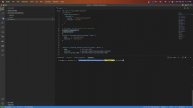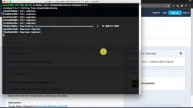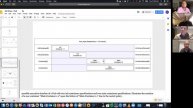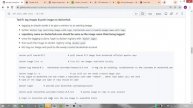Python Control Statements with Examples | Python Training | Python Course - Class 5
Python Control Statements with Examples:
Python Continue, Break and Pass
In this Interesting Python Training Series, we learned about Looping in Python in detail in our previous tutorial.
This tutorial will explain about the various types of control statements in Python with a brief description, syntax and simple examples for your easy understanding.
✅ Python Demo
https://youtu.be/1IQ4giqA3yc
✅ Python Datatype and Keywords | Python Class 1
https://youtu.be/1IQ4giqA3yc
✅ Python Datatype and Keywords | Python Class 2
https://youtu.be/CgV_KlqyvGA
✅ Python Datatype and Keywords | Python Class 3
https://youtu.be/aHdSp6QnIU0
✅ Python Datatype and Keywords | Python Class 4
https://youtu.be/YRUWqmKNVng
✅ Python Control Statements with Examples | Python Class 5
https://youtu.be/x58XulCMkTw
FREE Python Operators Training ? | Live Python Operators Training:
Control Statements in Python
Control statements in python are used to control the order of execution of the program based on the values and logic.
Python provides us with 3 types of Control Statements:
Continue
Break
Pass
#1) Continue Statement:
When the program encounters a continue statement, it will skip the statements which are present after the continue statement inside the loop and proceed with the next iterations.
Syntax:
continue
Example:
for char in ‘Python’:
if (char == ‘y’):
continue
print(“Current character: “, char)
Output:
Current character: P
Current character: t
Current character: h
Current character: o
Current character: n
#2) Break Statement:
The break statement is used to terminate the loop containing it, the control of the program will come out of that loop.
Syntax:
break
Example:
for char in ‘Python’:
if (char == ‘h’):
break
print(“Current character: “, char)
Output:
Current character: P
Current character: y
Current character: t
#3) Pass Statement:
Pass statement is python is a null operation, which is used when the statement is required syntactically.
Syntax:
pass
Example:
for char in ‘Python’:
if (char == ‘h’):
pass
print(“Current character: “, char)
Output:
Current character: P
Current character: y
Current character: t
Current character: h
Current character: o
Current character: n
Hope this tutorial has explained all you need to know about Control Statements in Python.
Watch out our upcoming tutorial to know more about Python Functions!!
For WhatsApp https://wa.me/919581239898 Or Call ? +91 958 123 9898
#FreePythonClasses #FreePythonDataTypeKeywors #FreePythonTraining #python #pythonprogramming #class1 #limitedseats #pythontutorial #pythonforbeginners #mylearnnest #mylearnnesttraininingacademy #pythoncourse #pythontraining #pythononlinetraining #pythononline #pythononlinecourse #mylearnnest #pythoncontrolstatements
python control statements,
python conditional statements,
control structures in python,
how many control statements python supports,
control flow statements in python with examples,
what are the control statements in python,
python flow control statements,
python conditional statements programs,
in python conditional statement,
what are control flow statements in python,
python conditional statements exercises,
python course in hyderabad,python training in hyderabad,python django course in hyderabad,python courses in hyderabad,python training in hyderabad with placement,python training institute near me,python coaching in hyderabad,python course fees in hyderabad ameerpet,best python training institute in hyderabad,best python training in hyderabad with placement,python training and placement in hyderabad,best python course in hyderabad,python django training in hyderabad
Видео Python Control Statements with Examples | Python Training | Python Course - Class 5 автора Кодовое Погружение
Видео Python Control Statements with Examples | Python Training | Python Course - Class 5 автора Кодовое Погружение
Информация
2 декабря 2023 г. 12:37:41
00:44:13
Похожие видео






















